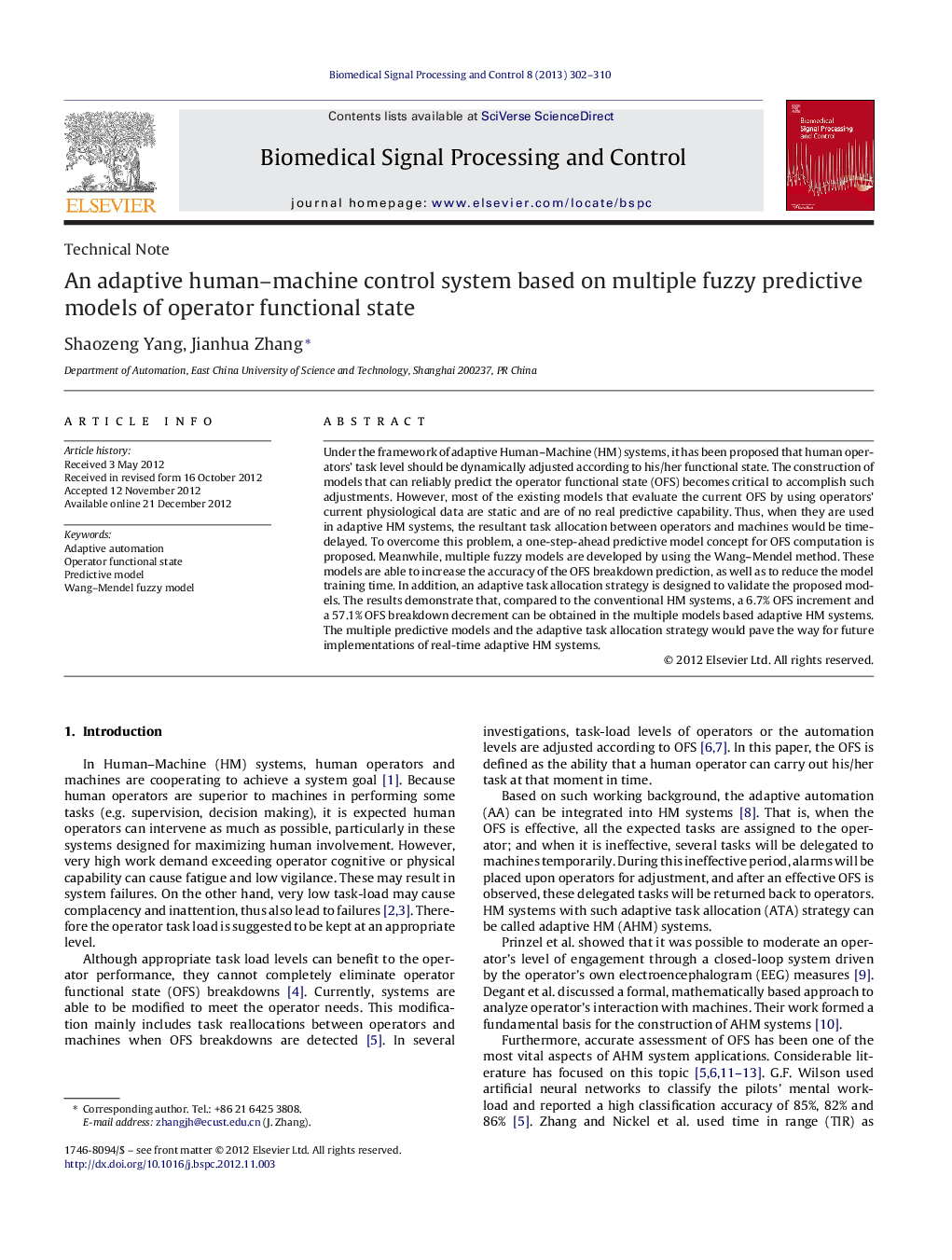| Article ID | Journal | Published Year | Pages | File Type |
|---|---|---|---|---|
| 562640 | Biomedical Signal Processing and Control | 2013 | 9 Pages |
Under the framework of adaptive Human–Machine (HM) systems, it has been proposed that human operators’ task level should be dynamically adjusted according to his/her functional state. The construction of models that can reliably predict the operator functional state (OFS) becomes critical to accomplish such adjustments. However, most of the existing models that evaluate the current OFS by using operators’ current physiological data are static and are of no real predictive capability. Thus, when they are used in adaptive HM systems, the resultant task allocation between operators and machines would be time-delayed. To overcome this problem, a one-step-ahead predictive model concept for OFS computation is proposed. Meanwhile, multiple fuzzy models are developed by using the Wang–Mendel method. These models are able to increase the accuracy of the OFS breakdown prediction, as well as to reduce the model training time. In addition, an adaptive task allocation strategy is designed to validate the proposed models. The results demonstrate that, compared to the conventional HM systems, a 6.7% OFS increment and a 57.1% OFS breakdown decrement can be obtained in the multiple models based adaptive HM systems. The multiple predictive models and the adaptive task allocation strategy would pave the way for future implementations of real-time adaptive HM systems.
► This paper proposes a predictive model concept for the operator functional state calculation. ► The Wang–Mendel method is used to construct the multiple predictive fuzzy models. ► The simulation shows that the predictive models are useful to prevent the operator performance breakdowns. ► Meanwhile, the models can complete the modeling work with less time than PSO-based methods. ► The models can be used in the future on-line Human–Machine systems.
